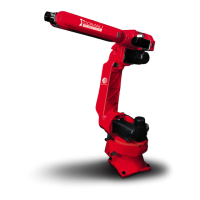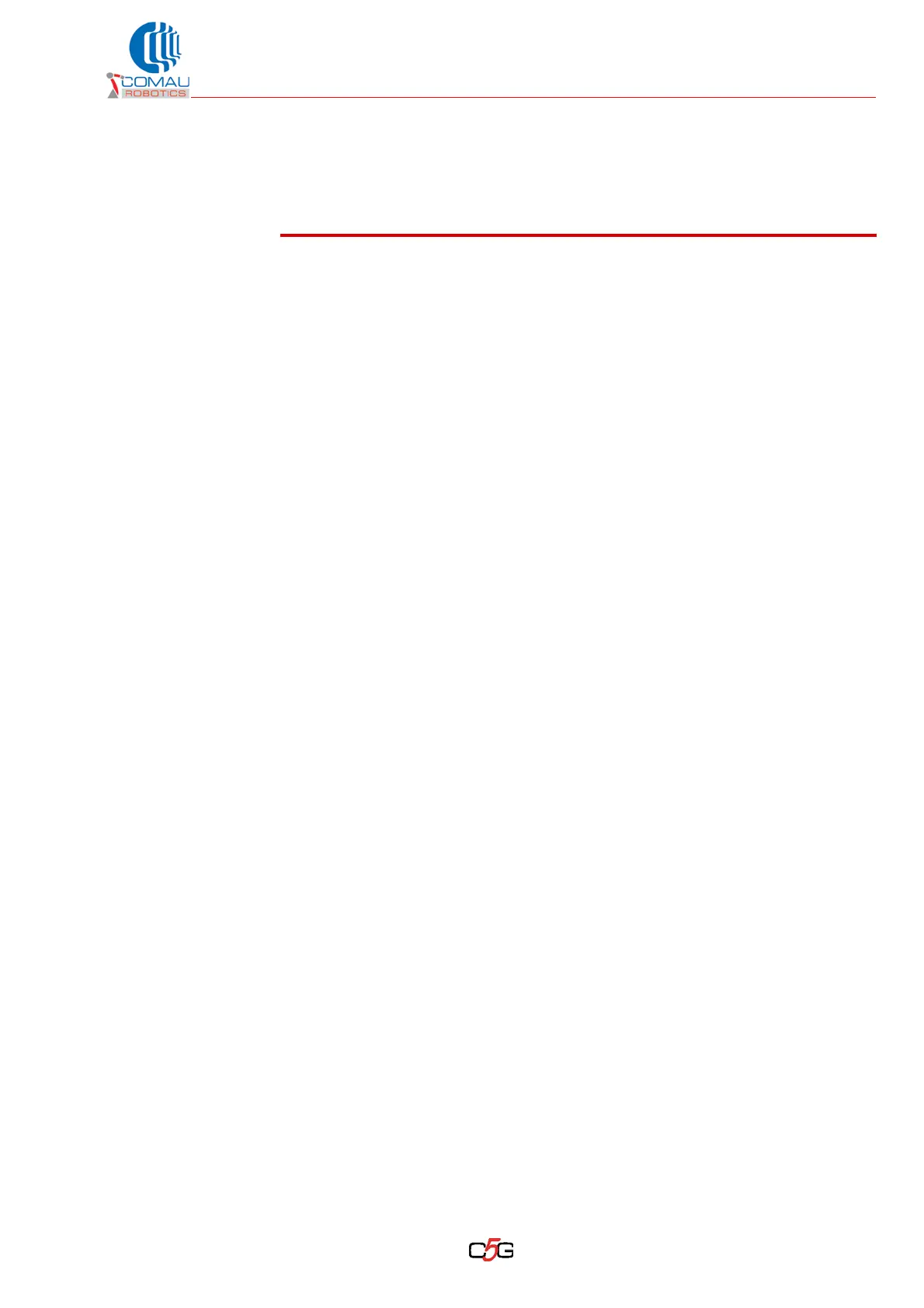How to move the robot when the control unit is damaged
39
HS-RC-C5E-MAN_08.fm
00/0511
6. HOW TO MOVE THE ROBOT WHEN THE
CONTROL UNIT IS DAMAGED
This chapter deals with the following topics:
– Precautions before starting
– Risks associated with the Robot handling with Control Unit disconnected
– How to use the Brake Release module C5G-OBR
6.1 Precautions before starting
– Read carefully the instructions in Chap.2. - Maintenance prescriptions on page 19
–The “integrated brake releasing device” located on the Robot may be disabled if
the Control Unit is damaged. In that case, it is possible to use the brake releasing
Module C5G-OBR (optional). The brake release Module C5G-OBR is to be
regarded as an alternative solution in case the programming terminal cannot be
used.
– The brake releasing Module C5G-OBR powers the engine brakes with a 24Vdc
current from an outside source. This command may therefore give rise to possible
dropping risks (refer to
par. 6.2 Risks associated with the Robot handling with
Control Unit disconnected on page 39).
– The “integrated brake releasing device” usage procedures are to be found in each
specific Robot maintenance manual.
6.2 Risks associated with the Robot handling
with Control Unit disconnected
– The axes releasing procedure may result in the axes dropping.
– The brake release module C5G-OBR cuts off all system safety devices:
emergency stop, enabling device push button, general stop and fence.
– Depending on the load applied to the Robot wrist and position, the axes may move
unpredictably and induce a dropping path that is not perpendicular to the floor.
– While carrying out those activities, the operators shall never stand in the operating
area and in particular under the Robot axes.
– Suitable lifting means may be required to lift the axes and equipment installed on
the Robot wrist, due to their weight (e.g. crane, bridge crane).
– In case of person trapping, enable the brake releasing control only if you are sure
that the involved person will not have to experience a pressure increase caused by
the released axes weight.

